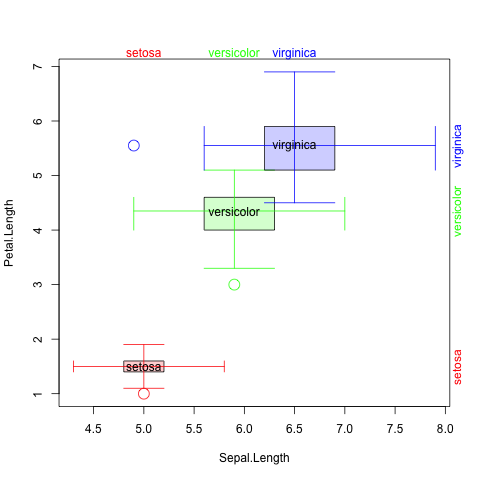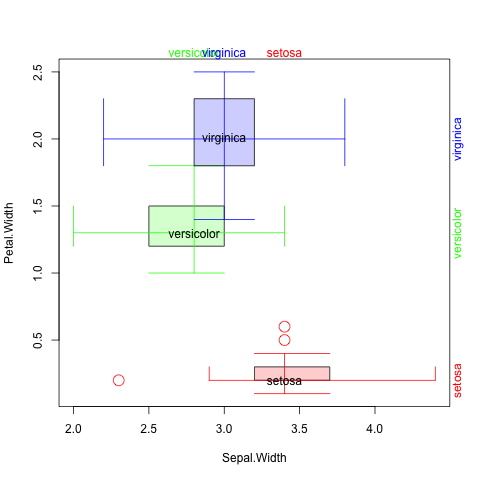boxplotdbl and diaplt Packages 1.0.0 Public Beta are Available
Want to share your content on R-bloggers? click here if you have a blog, or here if you don't.
These are beta version because the help manuals are not written yet. Their functions are already matured to the releasse stage. I will put them to CRAN as soon as finishing help files, and that will be after a few weeks. Once submitted to CRAN, things will go slower. So reporting bugs or giving me any suggestions are especially welcomed before I submit them. Of course I will welcome your responses after the submission, too.
You can download them at:
- http://code.google.com/p/cowares-excel-hello/downloads/list?q=label:boxplotdbl_r
- http://code.google.com/p/cowares-excel-hello/downloads/list?q=label:diaplt_r
Installation procedure is:
install.packages('/downloaded/folder/boxplotdbl_1.0.0.tar.gz',
repos=NULL,type='source')
library(boxplotdbl)
install.packages('/downloaded/folder/diaplt_1.0.0.tar.gz',
repos=NULL,type='source')
library(diaplt)
Instructions are available in the source code located in R folder. Or following urls:
- http://tomizonor.wordpress.com/2013/03/15/double-box-plot/
- http://code.google.com/p/cowares-excel-hello/source/browse/trunk/boxplotdou/boxplotdou.R?spec=svn975&r=975
- http://code.google.com/p/cowares-excel-hello/source/browse/trunk/beadsplot/beadsplot.R?spec=svn976&r=976
boxplotdbl
The boxplotdou function in boxplotdbl package is for,
- Correlation chart of two set (x and y) of data.
- Using Quartiles with boxplot style.
- Visualize the effect of factor.
To start quickly, I use here the built-in iris data frame. This is a paired data, but the boxplotdou is designed for two independent data frames combined by common factors.
boxplotdou(iris[c(5,1)],iris[c(5,3)])
boxplotdou(iris[c(5,2)],iris[c(5,4)])
diaplt
The beadsplot function in diaplt package is for,
- Visualize one-factor data frame.
- Beads plot consists of diamonds of each factor of each data series.
- A diamond indicates average and range.
- Look over a data frame with many numeric columns and a factor column.
I developed this chart to look over a soil chemical component data between several sites.
beadsplot(iris[1:4],iris[5],scale.range=NULL,scale.mean=NULL)
beadsplot(iris[1:4],iris[5])
R-bloggers.com offers daily e-mail updates about R news and tutorials about learning R and many other topics. Click here if you're looking to post or find an R/data-science job.
Want to share your content on R-bloggers? click here if you have a blog, or here if you don't.




